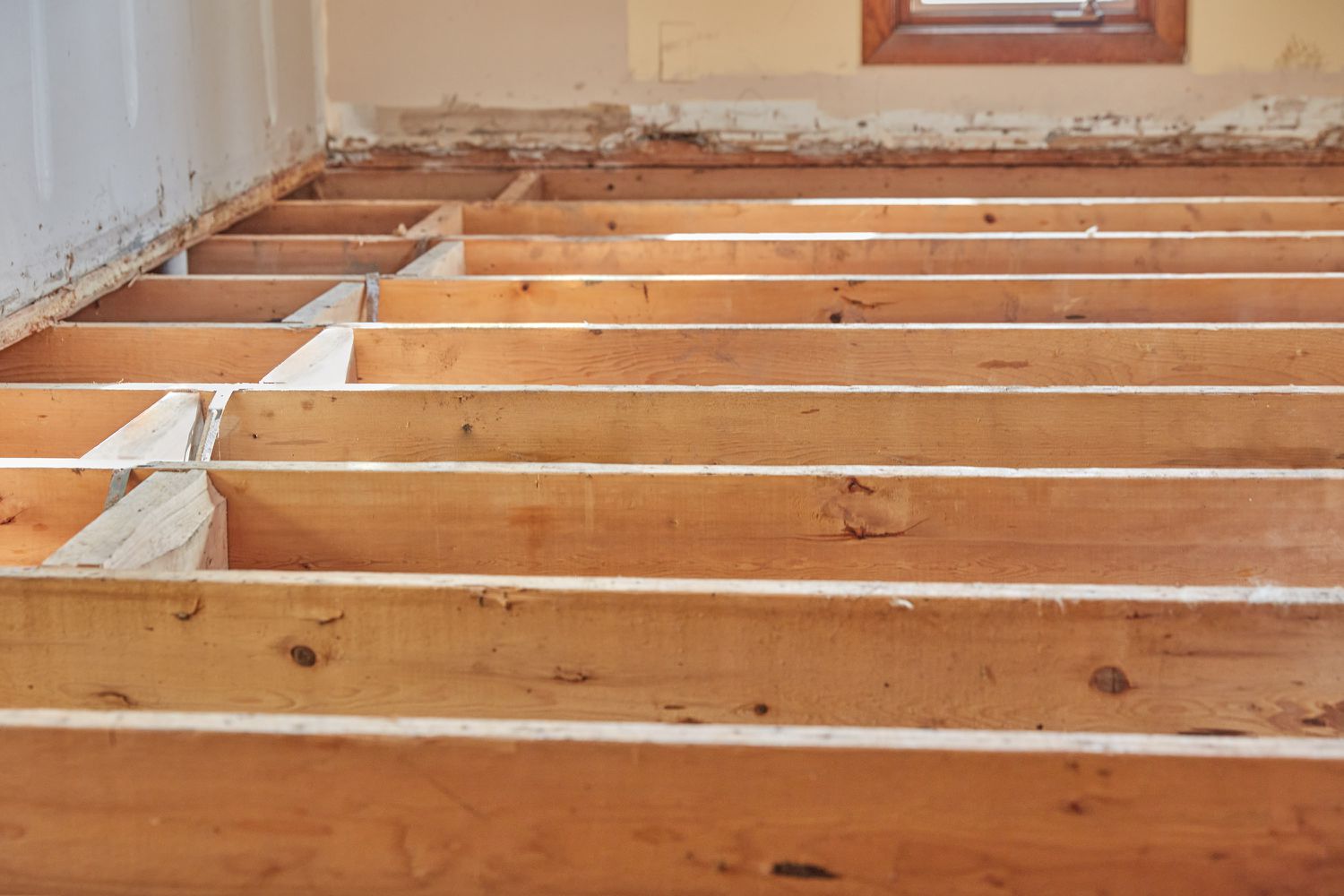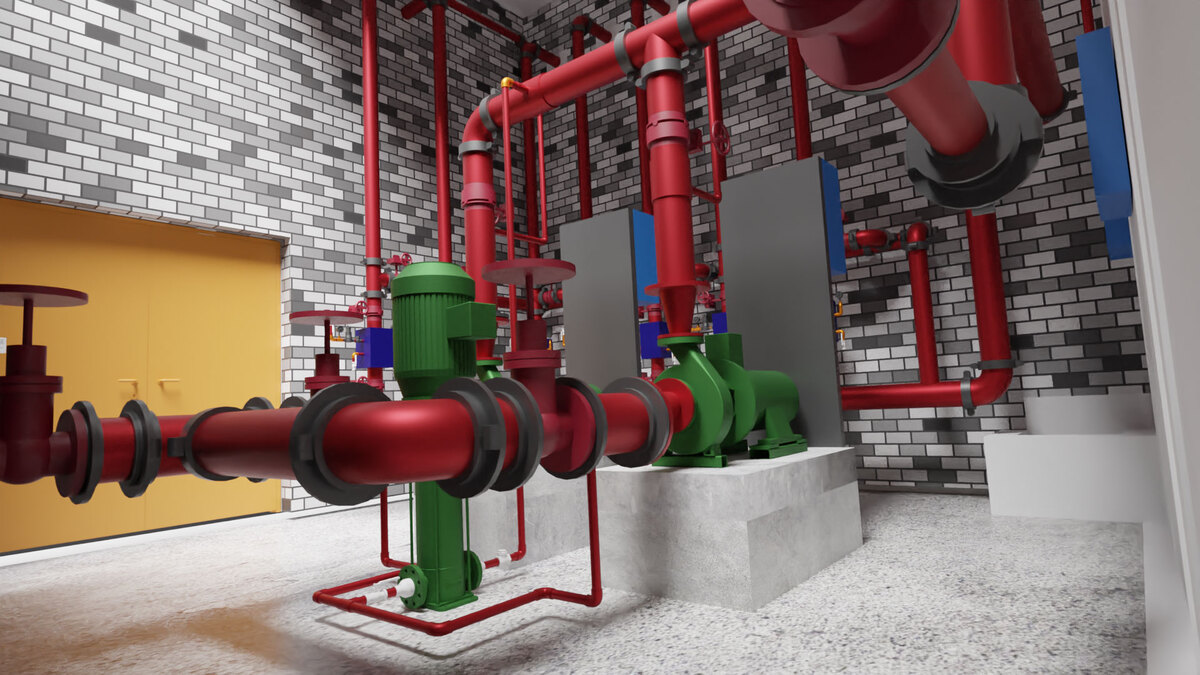Home>diy>Building & Construction>What Is The NAICS Code For Construction


Building & Construction
What Is The NAICS Code For Construction
Modified: January 24, 2024
Discover the NAICS code for building construction and streamline your business operations. Ensure accurate classification for your construction projects with the right NAICS code.
(Many of the links in this article redirect to a specific reviewed product. Your purchase of these products through affiliate links helps to generate commission for Storables.com, at no extra cost. Learn more)
Introduction
Welcome to the world of construction, where skilled craftsmen and innovative architects collaborate to bring magnificent structures to life. The construction industry is a diverse and dynamic sector, spanning everything from towering skyscrapers to cozy residential homes. With a myriad of activities and specialties involved, it is important to have a standardized system for classifying construction projects. This is where the North American Industry Classification System (NAICS) codes come into play.
NAICS codes are a set of numbers used to categorize businesses and industries in North America. They provide a consistent and uniform method for organizing and understanding various sectors of the economy. Each sector is assigned a unique code, allowing for easy identification and differentiation from other industries.
In this article, we will delve into the specifics of NAICS codes as they pertain to the construction industry. We will explore how these codes are assigned, the importance of NAICS codes in the construction sector, and how they can be effectively utilized. So, let us embark on this journey into the world of construction and NAICS codes.
Key Takeaways:
- NAICS codes provide a standardized system for classifying construction activities, enabling accurate data analysis, industry benchmarking, and targeted market research within the dynamic construction sector.
- While valuable, NAICS codes may not capture all specialized construction activities and may require supplementation with additional information and industry-specific research for a comprehensive understanding of the construction landscape.
Understanding NAICS Codes
Before we dive into the NAICS code for the construction industry, it’s important to have a solid understanding of what NAICS codes are and how they function.
The North American Industry Classification System (NAICS) is a standardized system used by government agencies, researchers, and businesses to classify economic activities in North America. NAICS codes consist of a series of numbers that represent specific industries, allowing for easier comparison and analysis of business data.
NAICS codes are organized in a hierarchical structure, starting with a two-digit sector code that represents broad industry sectors. These broad sectors are then broken down further into more specific subsectors, and this process continues until reaching a six-digit code that represents the most detailed level of classification.
NAICS codes are regularly updated to reflect changes in the economy. The latest edition, NAICS 2017, provides more detailed classification codes compared to previous versions, allowing for more accurate analysis of industry trends and statistics.
By leveraging NAICS codes, businesses can better understand their industry landscape, identify potential competitors, and access relevant industry data and research. Furthermore, government agencies and researchers can utilize NAICS codes to track economic trends, allocate resources, and administer statistical surveys.
Now that we have a solid grasp of NAICS codes and their purpose, let’s explore the specific NAICS code for the construction industry.
NAICS Code for Construction
In the realm of construction, the NAICS code provides a way to classify and categorize the diverse range of activities within the industry. The NAICS code for construction falls under the sector of “Construction,” which is defined by the two-digit code 23.
Within the Construction sector, there are several subsectors that cover different aspects of the industry. These subsectors are represented by three to six-digit NAICS codes. Some examples of subsectors and their corresponding codes include:
- Residential Building Construction (2361)
- Non-Residential Building Construction (2362)
- Utility System Construction (2371)
- Highway, Street, and Bridge Construction (2373)
- Specialty Trade Contractors (238)
The subsectors under the Construction sector encompass a wide range of activities, including residential and non-residential building construction, infrastructure development, and specialized trade contracting.
By utilizing the specific NAICS code that corresponds to their area of construction expertise, businesses can accurately classify their operations and access industry-specific information and resources. This enables organizations to effectively benchmark their performance, analyze market trends, and connect with clients and partners within their specific subsector.
It is important to note that while the NAICS code for construction provides a useful classification framework, it cannot capture every unique aspect or specialization within the industry. For example, highly specialized or niche construction activities may require a more specific classification beyond the available NAICS codes. Nevertheless, the NAICS code for construction serves as a valuable starting point for businesses and researchers in navigating the construction industry landscape.
Next, let’s delve into how NAICS codes are assigned to different industries and activities within the construction sector.
How NAICS Codes are Assigned
The process of assigning NAICS codes to different industries and activities within the construction sector is conducted by the U.S. Census Bureau, in collaboration with Statistics Canada and Mexico’s Instituto Nacional de Estadistica y Geografia. These organizations work together to ensure consistency and comparability across North America.
When determining the appropriate NAICS code for a specific construction activity, several factors are taken into consideration. These factors include the nature of the work being performed, the primary products or services offered, and the primary audience or market served.
The U.S. Census Bureau provides guidelines and resources to help businesses determine the appropriate NAICS code for their operations. This includes detailed descriptions and examples of activities that fall within each code. Additionally, businesses can reach out to the Census Bureau for further clarification or assistance in assigning the correct code.
It is important for businesses to accurately assign their NAICS code, as it impacts how they are classified and categorized within economic data and industry reports. This, in turn, affects factors such as eligibility for government contracts, access to industry-specific research, and benchmarking against competitors.
The process of assigning NAICS codes is not static; it undergoes periodic review and revision to incorporate emerging industries and activities. This ensures that the classification system remains relevant and reflective of the ever-evolving economic landscape.
Now that we have an understanding of how NAICS codes are assigned within the construction industry, let’s explore the importance of these codes in the construction sector.
Importance of NAICS Codes in the Construction Industry
NAICS codes play a vital role in the construction industry by providing a standardized and systematic classification system. Here are some key reasons why NAICS codes are important in the construction sector:
- Accurate Classification: NAICS codes ensure that construction activities are classified appropriately, allowing for accurate data collection and analysis. This helps in identifying industry trends, measuring economic impact, and conducting comparative analysis between different construction subsectors.
- Industry Benchmarking: NAICS codes provide a framework for benchmarking construction businesses within their respective subsectors. Organizations can compare their performance against industry averages and identify areas for improvement or opportunities for growth.
- Market Research: By utilizing NAICS codes, businesses and researchers can access market research reports and data specific to their construction subsector. This information helps in making informed decisions, identifying potential clients or customers, and understanding market dynamics.
- Government Contracts: Many government agencies use NAICS codes to classify and procure construction services. By accurately identifying their NAICS code, businesses can increase their chances of qualifying for government contracts and accessing valuable opportunities.
- Data Analysis: NAICS codes enable researchers and government agencies to analyze construction-related data at a granular level. This includes monitoring industry performance, tracking employment trends, and understanding the economic impact of the construction sector.
- Industry Collaboration: NAICS codes facilitate collaboration and networking among construction businesses. By utilizing the same classification system, organizations can easily identify potential partners or suppliers within their specific subsector.
Overall, NAICS codes in the construction industry provide a standardized framework that enhances data analysis, fosters industry collaboration, and enables businesses to make informed decisions based on accurate industry classification.
Now, let’s explore how to effectively utilize the NAICS code for construction purposes.
The NAICS code for construction is 23. This code is used to classify businesses involved in construction activities, including residential, commercial, and industrial construction.
How to Use the NAICS Code for Construction
The NAICS code for construction serves as a valuable tool for businesses and researchers alike. Here are some key ways to effectively utilize the NAICS code for construction:
- Identify Your Subsector: Understand the specific activities and services your construction business provides. Determine the most relevant subsector within the construction industry that aligns with your offerings.
- Research and Analysis: Utilize the NAICS code to access industry-specific research, data, and reports. This can help you gain insights into market trends, competition, and customer preferences within your subsector.
- Targeted Marketing: Utilize the NAICS code to identify and target potential clients or customers within your construction subsector. By understanding the specific needs and requirements of your target market, you can tailor your marketing strategies for better results.
- Government Contracts: If your construction business is interested in securing government contracts, ensure you accurately identify and include your NAICS code in your business registrations. This increases your chances of qualifying for construction-related government projects.
- Benchmark Performance: Compare your construction business’s performance against industry averages within your NAICS code. This allows you to identify areas of improvement, set realistic goals, and measure your success against industry standards.
- Industry Networking: Utilize the NAICS code to connect and collaborate with other construction businesses operating in your subsector. Attend industry-specific events, join professional associations, and engage in networking opportunities to build partnerships and share best practices.
By effectively using the NAICS code for construction, you can position your business for success, access relevant industry resources, and make informed decisions based on accurate industry classification.
Now, let’s explore some specific examples of NAICS codes for construction activities.
NAICS Code Examples for Construction Activities
The NAICS code system provides a comprehensive classification framework for various construction activities. Here are a few examples of NAICS codes that encompass different aspects of the construction industry:
- 2361 – Residential Building Construction: This NAICS code is applicable to businesses involved in the construction of residential buildings, including single-family homes, apartments, and condominiums.
- 2362 – Non-Residential Building Construction: This code covers the construction of non-residential structures such as office buildings, commercial facilities, educational institutions, healthcare facilities, and industrial buildings.
- 2371 – Utility System Construction: This code applies to businesses engaged in the construction of utility systems, including power generation and distribution, water and sewage systems, and telecommunication infrastructure.
- 2373 – Highway, Street, and Bridge Construction: This NAICS code is assigned to companies specializing in the construction of highways, roads, streets, bridges, tunnels, and other transportation infrastructure.
- 238 – Specialty Trade Contractors: This code encompasses various specialized trade contractors involved in specific construction activities, such as electrical work, plumbing and HVAC installations, painting, carpentry, roofing, and landscaping.
These examples illustrate the diverse range of construction activities covered by NAICS codes. Each code represents a distinct subsector within the construction industry, enabling accurate classification and analysis of specific construction business operations.
It’s worth noting that NAICS codes provide a general classification framework, and some construction activities may require more specific codes. In such cases, businesses can consult additional resources or seek guidance from the U.S. Census Bureau to identify the most appropriate NAICS code.
Having explored NAICS code examples for construction, let’s now consider the limitations of NAICS codes in the construction industry.
Limitations of NAICS Codes in Construction
While NAICS codes provide a valuable classification system for the construction industry, it is important to be aware of their limitations. Here are a few potential drawbacks of relying solely on NAICS codes:
- Lack of Specificity: NAICS codes offer a broad classification system, but they may not capture the intricacies of highly specialized or niche construction activities. Some construction businesses may find that their specific services or products are not accurately represented by the available NAICS codes.
- Scope of Operations: NAICS codes primarily focus on classifying the main activities of a business. However, construction companies often engage in a wide range of activities or project types. This can make it challenging to accurately represent the full scope of operations within a single NAICS code.
- Emerging Industries: As the construction industry evolves and new technologies and practices emerge, some activities may not be captured by existing NAICS codes. This can result in a delay in accurately classifying and identifying emerging segments within the construction sector.
- Regional Variations: NAICS codes are designed to provide a standardized classification system across North America. However, regional variations in construction practices and industry structure may present challenges in accurately representing regional nuances within the broader NAICS code framework.
- Dynamic Nature: The construction industry is dynamic, constantly evolving, and adapting to new trends and technologies. NAICS codes, although updated periodically, may not always keep up with these rapid changes, leading to potential discrepancies and inaccuracies in classification.
Despite these limitations, NAICS codes still serve as a valuable tool for classifying and comparing construction activities. However, it is important to supplement NAICS codes with additional information, industry-specific research, and contextual understanding to gain a comprehensive view of the construction sector.
Now, let’s wrap up our exploration of NAICS codes in the construction industry.
Conclusion
The North American Industry Classification System (NAICS) codes play a crucial role in the construction industry by providing a standardized and systematic classification system. They allow businesses, government agencies, and researchers to categorize and analyze construction activities, enabling accurate data collection, industry benchmarking, and targeted market research.
While the NAICS code for construction provides a broad framework for classification, it is important to acknowledge its limitations. The lack of specificity, regional variations, and the dynamic nature of the construction industry can pose challenges in accurately representing all construction activities within the existing NAICS code structure.
Despite these limitations, the NAICS code system remains a valuable tool for construction businesses. It offers a starting point for classification, industry analysis, and market research. By leveraging the appropriate NAICS code, construction companies can benchmark their performance, target specific markets, and explore opportunities for growth.
It is important to note that NAICS codes are periodically updated to reflect changes in the industry. Businesses should stay informed about the latest updates and consult additional resources if their specific activities are not adequately represented by the available codes.
In conclusion, NAICS codes serve as a foundational classification system for the construction industry, providing a standardized framework for organizing and understanding the diverse range of construction activities. While they have limitations, they remain an essential tool in promoting accurate data analysis, benchmarking, and market research within the construction sector.
So, whether you are a contractor, architect, or researcher, understanding and effectively utilizing the NAICS code for construction can enhance your understanding of the industry and help drive success in your endeavors.
Frequently Asked Questions about What Is The NAICS Code For Construction
Was this page helpful?
At Storables.com, we guarantee accurate and reliable information. Our content, validated by Expert Board Contributors, is crafted following stringent Editorial Policies. We're committed to providing you with well-researched, expert-backed insights for all your informational needs.















0 thoughts on “What Is The NAICS Code For Construction”